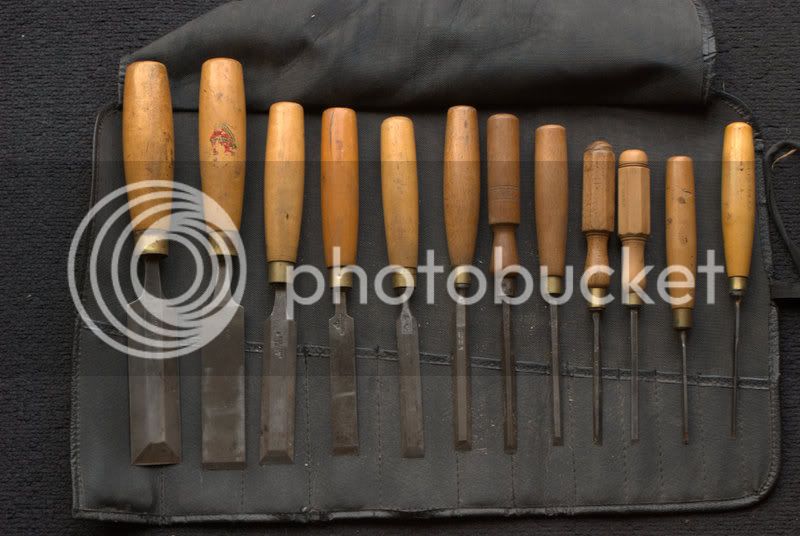Togalosh
Established Member
Hello Gents,
The time has come to get some decent chisels & I am almost sure to go for Sorby's (because they are English & I've read good things about them although I've not got my hands on 1 & that they are not as good today as the olduns- the American ones I handled at Axi seem very light & almost too delicate, although I've read glowing reports of them too). I need flat edged ones as I'm not ready for expensive turning ones just yet..but I'm stumped with the choice of blade & handle & would like your opinions please. So far the most I chop up to 25 w x 65 d mortices in oak as well the smaller joints. What would you recommend?
The main stumbling block is the choice of handle -how did you choose which handle to go for ? The 2 main choices are a boxwood carvers or an octagonal. The octagonal has double hoops - does this mean the carver type is much less robust & only fit for light malleting?..but is the octagonal 1 comfortable?
Then what style blade for mortice chisels- registered, sash mortice? Why don't they do small bevel edge mortice blades - just big ones ?? Then these handles are Ash in a 3rd design which look better than the other 2. Do you hold the chisel so differently for different jobs?
Paring chisels?.. All my paring (as I understand it) can be done with normal chisels- so why need a long chisel?. Why are paring blades so long? Joints aren't that deep & surely a plane will do a better job over that distance - or am I missing something?
Then if having a heavy mallet is better for acuracy & muscle strain why are wide faced mallets so light? I like the weight of the nylon Thor but it's face is narrow. Do you make or modify your own mallet ?
Thanks
The time has come to get some decent chisels & I am almost sure to go for Sorby's (because they are English & I've read good things about them although I've not got my hands on 1 & that they are not as good today as the olduns- the American ones I handled at Axi seem very light & almost too delicate, although I've read glowing reports of them too). I need flat edged ones as I'm not ready for expensive turning ones just yet..but I'm stumped with the choice of blade & handle & would like your opinions please. So far the most I chop up to 25 w x 65 d mortices in oak as well the smaller joints. What would you recommend?
The main stumbling block is the choice of handle -how did you choose which handle to go for ? The 2 main choices are a boxwood carvers or an octagonal. The octagonal has double hoops - does this mean the carver type is much less robust & only fit for light malleting?..but is the octagonal 1 comfortable?
Then what style blade for mortice chisels- registered, sash mortice? Why don't they do small bevel edge mortice blades - just big ones ?? Then these handles are Ash in a 3rd design which look better than the other 2. Do you hold the chisel so differently for different jobs?
Paring chisels?.. All my paring (as I understand it) can be done with normal chisels- so why need a long chisel?. Why are paring blades so long? Joints aren't that deep & surely a plane will do a better job over that distance - or am I missing something?
Then if having a heavy mallet is better for acuracy & muscle strain why are wide faced mallets so light? I like the weight of the nylon Thor but it's face is narrow. Do you make or modify your own mallet ?
Thanks

































